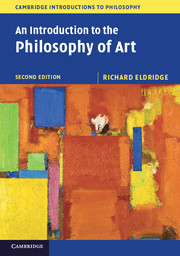Book contents
- Frontmatter
- Contents
- Acknowledgments
- Preface to the second edition
- 1 The situation and tasks of the philosophy of art
- 2 Representation, imitation, and resemblance
- 3 Beauty and form
- 4 Expression
- 5 Originality and imagination
- 6 Understanding art
- 7 Identifying and evaluating art
- 8 Art and emotion
- 9 Art and morality
- 10 Art and society: some contemporary practices of art
- 11 Epilogue: the evidence of things not seen
- Bibliography
- Index
- References
6 - Understanding art
Published online by Cambridge University Press: 05 June 2014
- Frontmatter
- Contents
- Acknowledgments
- Preface to the second edition
- 1 The situation and tasks of the philosophy of art
- 2 Representation, imitation, and resemblance
- 3 Beauty and form
- 4 Expression
- 5 Originality and imagination
- 6 Understanding art
- 7 Identifying and evaluating art
- 8 Art and emotion
- 9 Art and morality
- 10 Art and society: some contemporary practices of art
- 11 Epilogue: the evidence of things not seen
- Bibliography
- Index
- References
Summary
Six strategies for understanding art
Consider the following six very broad strategies for understanding Shakespeare’s Hamlet.
Hamlet can be seen in light of the conscious preoccupations of a roughly identifiable historical epoch such as Jacobean England, the Renaissance, or early modern Europe. For example, one may see the play as addressing problems of political authority and succession, problems of conscience in the light of the Reformation’s resistance to priestly mediation between individuals and God, problems of stagecraft and performance, or some combination of these and other problems. Shakespeare may reasonably be supposed to have known and thought about these problems. To explore Hamlet in this light will mean relating the text to varieties of contemporary documents – for example, political treatises, religious tracts, and instruction manuals for actors – that likewise evidently address such problems. Reading will focus on how the action of the play presents characters confronting these problems. Hamlet is here seen as a consciously formed document that partakes of the spirit of its times.
- Type
- Chapter
- Information
- An Introduction to the Philosophy of Art , pp. 142 - 166Publisher: Cambridge University PressPrint publication year: 2014
References
- 1
- Cited by

